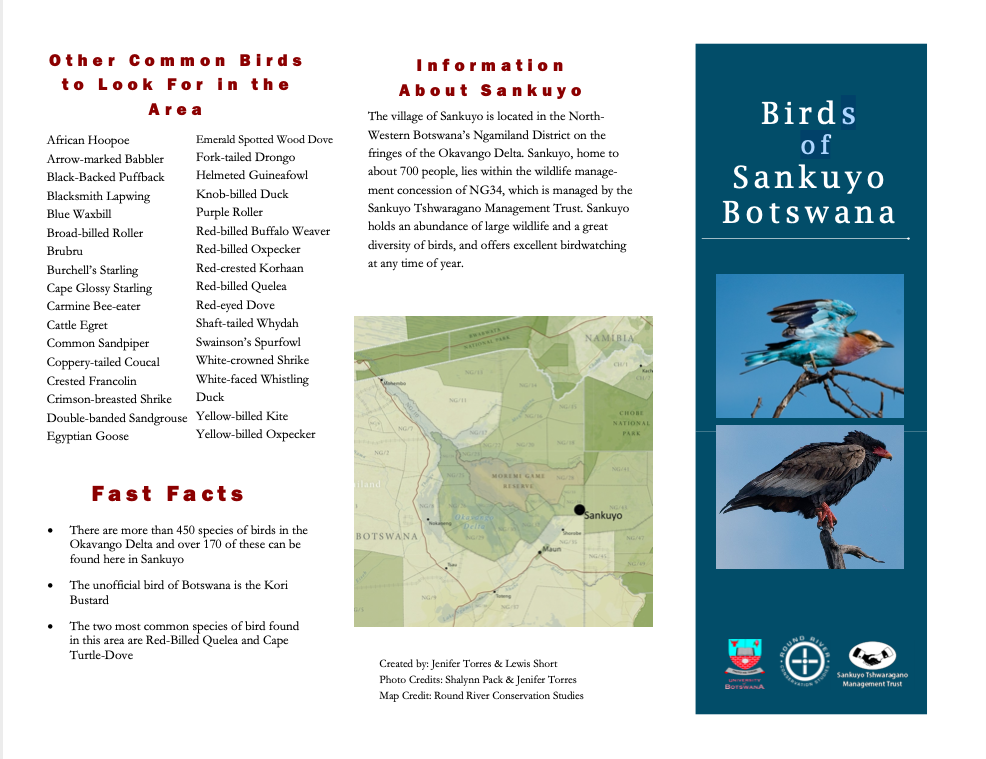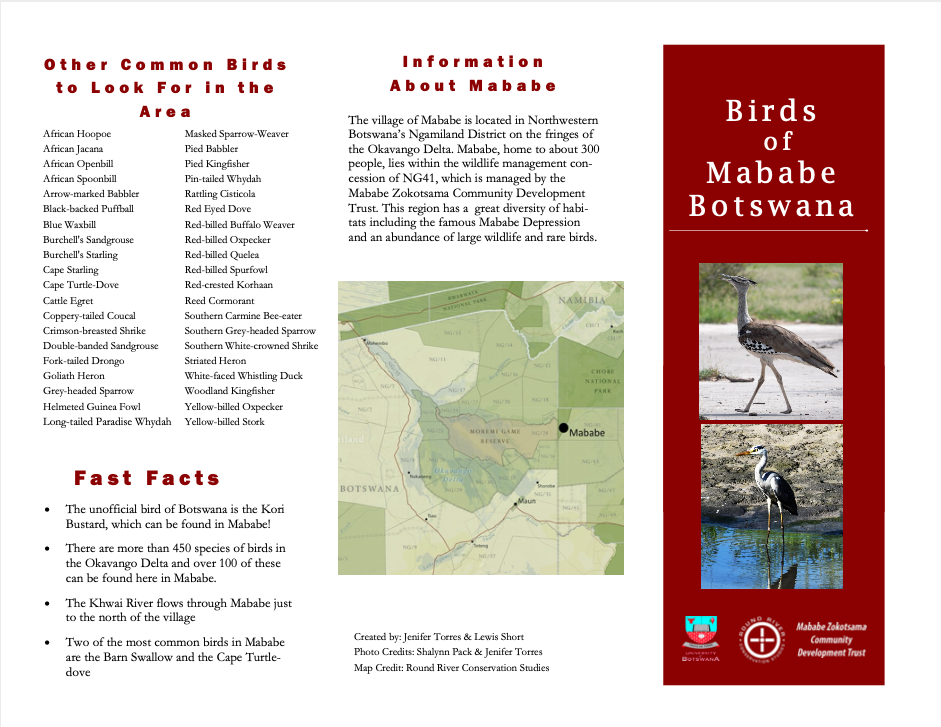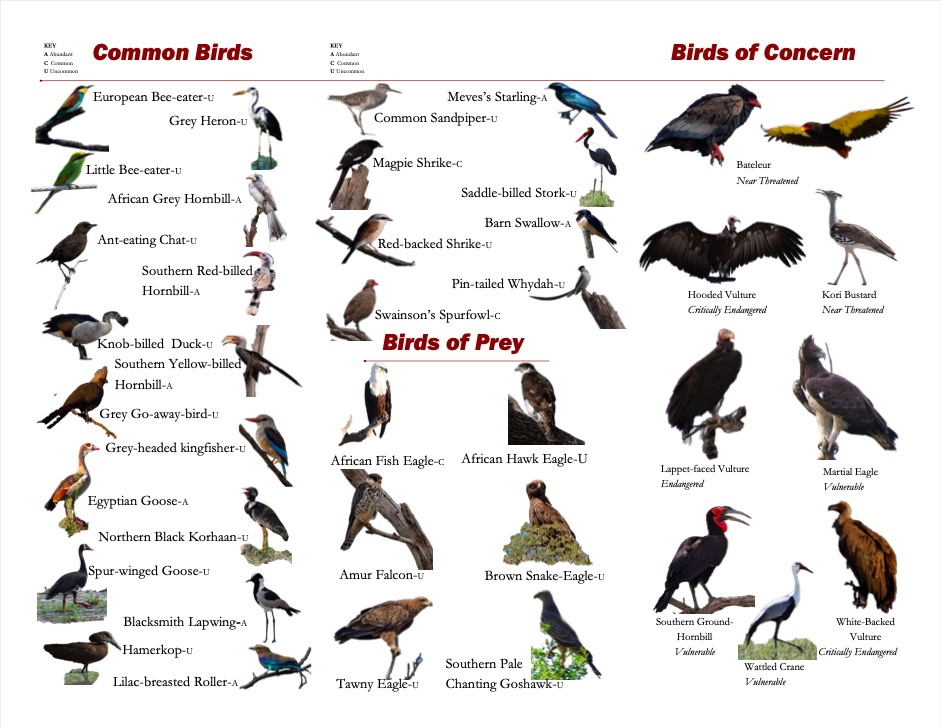By Lewis Short of University of Vermont
Arriving in South Africa en route to Botswana, the first thing I noticed were the birds – they were everywhere, singing their songs and waking me up from my winter hibernation in Vermont. These calls came with me to Botswana where, upon arriving at our first campsite, we met one of our hosts, a male hornbill who was always feeding his family in a tree. Birds were our constant companion throughout the program, whether in Maun, Sankuyo, or Mababe, they were always making their calls and often eating our leftovers.

We started to learn a few birds while we were in town in Maun, but it was not until going into the bush and staying in the Sankuyo concession that we began learning the birds of the Delta in full. We had our campsite birds like the yellow and red-billed hornbills, Meve’s Starlings, and the constant gobble call of Red-billed Spurfowl somewhere off in the bushes.
But it was out on our daily bush surveys or “transects” where the real birding magic started and where I became interested in what I thought only my Grandmother could be interested in. On our first transect, we saw three Ground Hornbills, which look like a mix of one of Satan’s creatures and an ugly turkey.

Another day, after finishing transect, we went into town to get some bread, we saw hundreds of vultures spiraling and riding a heat thermal upwards. This was always added to when with one of our instructors Dix, who seemingly knew every bird, and all our instructors would patiently help us work out what bird we had just heard or seen.
Moving on from Sankuyo into Mababe, we saw many of our typical feathered friends. But we also started to see new ones and began solidifying our birding knowledge. On our first day of getting to our new camp, we were visited by a bearded and tiny 6” tall fella called the African Scops owl.
A special day was when we traveled on the edge of the Mababe depression; a flat, wet grassland that stretched as far as the eye could see, this made for great birding. We saw everything from African Fish Eagles to a flock of bee-eaters to Botswana’s unofficial bird, the Kori Bustard. Coming into this program, I never thought looking at birds would be fun, but throughout the program, I grew to appreciate these birds and even make some favorites.
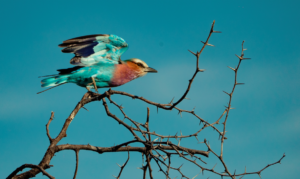

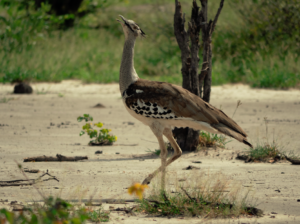
For my final research project, I worked with another student, Jennifer Torres, to create Bird Brochures for the villages of Sankuyo and Mababe. We used our field research data to determine the abundance of different species in these two villages and made a folding brochure for each village, showing its most common songbirds, birds of prey, and birds of conservation concern. This brochure helped to create a product for communities that they could use for tourism and education, and also that we could be proud of, showing off our newfound knowledge and interest for the birds of the Okavango Delta.
We’re proud to share the new brochures below, also downloadable from the Round River website (Sankuyo, Mababe).
